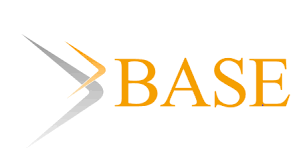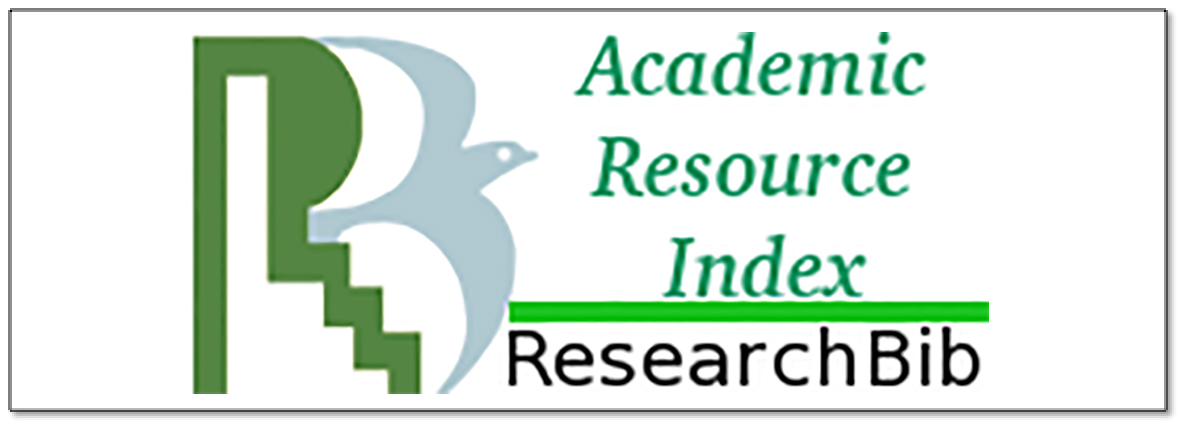Influence of Water Binder Ratio and Chemical Admixture on the Properties of Self- Compacting Concrete with composite Cement- Fly Ash binder
Abstract
This paper describes an experimental investigation to study the combined effect of water binder ratio and chemical admixture on mechanical properties of self- compacting concrete (SCC) prepared using composite fly ash–cement binder. For this purpose, the mixture proportioning for SCC was based upon creating a high-degree of flowability by using High-Range Water-Reducing Admixtures (HRWRA) combined with Viscosity Modifying Admixture (VMA) to ensure homogeneity of the mixture. The flowability test results showed that the spread for all mixes was within the specified range recommended by EFNARC 2005 and EN 206. The J Ring height for all SCC mixes was observed to be between 17-20 mm, which was within the specified limits of EFNARC 2005. A visual stability index has been provided to all SCC mixes for qualitative assessment of the flowability indexes. The cementing efficiency factor of fly ash, adopted in the presented work, restores the cementitious content in the mix. At 0.36 w/b ratio, the cube compressive strength at 28 days was almost 51MPa when 2.2% HRWRA with VMA was added to the mix. Through the different flowability test results, an effort has been made to develop a correlation between different flowability parameters using regression analysis in MINITAB software. An empirical formula in the form of basic equations suggested by CEB-FIP and ACI 363R -92 to express the relationship between split tensile strength and compressive strength of SCC has also been proposed.
References
2. Bharathi V, Subramania RJ V., Regupathy R, Seenivasa C. Workability and strength study of high volume fly ash self- concrete. Indian Concr J. 2009;83:17–22.
3. De Schutter G, Bartos P, Domone P, Gibbs J. Self-Compacting Concrete. J Adv Concr Technol [Internet]. 2008;1(1):5–15. Available from: http://discovery.ucl.ac.uk/41306/
4. Okamura H, Ouchi M. Self-Compacting Concrete. J Adv Concr Technol [Internet]. 2003;1(1):5–15. Available from: https://www.jstage.jst.go.jp/article/jact/1/1/1_1_5/_article
5. Almuwbber O, Haldenwang R, Mbasha W, Masalova I. The influence of variation in cement characteristics on workability and strength of SCC with fly ash and slag additions. Constr Build Mater [Internet]. 2018;160:258–67. Available from: https://doi.org/10.1016/j.conbuildmat.2017.11.039
6. Rols S, Amboise J, Pera J. Development of admixture for self-levelling concrete. Cem Concr Res. 1999;29:261–6.
7. Khayat KH. Viscosity-enhancing admixtures for cement-based materials — An overview. Cem Concr Compos [Internet]. 1998;20(2–3):171–88. Available from: http://linkinghub.elsevier.com/retrieve/pii/S0958946598800061
8. Khayat KH, Yahia A. Effect of welan gum-high-range water reducer combinations on rheology of cement grout. ACI Mater J. 1997;94(5):365–72.
9. Allen F, Best G, Lindroth T. Welan gum in cement compositions. US Patent 5. 1991. p. 004–506.
10. Rao S V, Rao MV., Kumar PR. Effect of Size of Aggregate and Fines on Standard And High Strength Self Compacting Concrete. J Appl Sci Res [Internet]. 2010;6(5):433–442. Available from: http://www.aensiweb.com/old/jasr/jasr/2010/433-442.pdf
11. Jayasree C, Santhanam M, Gettu R. Cement-superplasticiser compatibility - Issues and challenges. Vol. 85, Indian Concrete Journal. 2011. p. 48–60.
12. Ozawa K, Sakata N, Okamura H. Evaluation of self-incompatibility of fresh concrete using the funnel test. In: Concrete Library International 25 [Internet]. 1995. p. 59–76. Available from: http://library.jsce.or.jp/jsce/open/00670/No25/CLI-25-0059.pdf
13. Okamura H OM. Self-compacting concrete: development, present use and future. In: Frst international conference on self-compacting concrete. 1999. p. 3–14.
14. Siddique R. Effect of fine aggregate replacement with Class F fly ash on the abrasion resistance of concrete. Cem Concr Res. 2003;33(11):1877–81.
15. Gesoǧlu M, Güneyisi E, Özbay E. Properties of self-compacting concretes made with binary, ternary, and quaternary cementitious blends of fly ash, blast furnace slag, and silica fume. Constr Build Mater. 2009;
16. Khatib JM. Performance of self-compacting concrete containing fly ash. Constr Build Mater. 2008;22(9):1963–71.
17. Lachemi M, Hossain KMA, Lambros V, Bouzoubaâ N. Development of Cost-Effective Self-Consolidating Concrete Incorporating Fly Ash, Slag Cement, or Viscosity-Modifying Admixtures. ACI Mater J. 2003;100(5):419–25.
18. Poon CS, Ho DWS. A feasibility study on the utilization of r-FA in SCC. Cem Concr Res. 2004;34(12):2337–9.
19. Jalal M, Pouladkhan A, Harandi OF, Jafari D. Comparative study on effects of Class F fly ash, nano silica and silica fume on properties of high performance self compacting concrete. Constr Build Mater. 2015;94:90–104.
20. Güneyisi E, Gesoglu M, Al-Goody A, Ipek S. Fresh and rheological behavior of nano-silica and fly ash blended self-compacting concrete. Constr Build Mater. 2015;95:29–44.
21. Sonebi M, Bartos P, Zhu W, Gibbs J, Tamimi A. Final report task 4 on the SSC project; project no. BE 96-3801; self-compacting concrete: properties of hardened concrete. Advanced Concrete Masonry Center, University of Paisley, Scotland, UK. 2000.
22. Yazici H. The effect of silica fume and high-volume Class C fly ash on mechanical properties, chloride penetration and freeze-thaw resistance of self-compacting concrete. Constr Build Mater. 2008;22(4):456–62.
23. IS 456. PLAIN AND REINFORCED CONCRETE - CODE OF PRACTICE. Bur Indian Stand. 2000;144.
24. Smith IA. The design of fly ash concretes. Proc Inst Civ Eng [Internet]. 1967;36(4):769–90. Available from: http://www.icevirtuallibrary.com/doi/10.1680/iicep.1967.8472
25. DIN 1045-1. Structures made of concrete, reinforced concrete and prestressed concrete. Ger Inst Stand (Deutsches Inst für Normung). 2008;
26. British Standards Institution. BS 3892: Pulverised-fuel ash for use as a cementitious component in structural concrete. Pulverised-fuel ash. 1982;
27. IS: 8112. Ordinary Portland cement, 43 grade-Specification. Bur Indian Stand New Delhi. 1989;
28. IS:4031. IS: 4031-1996 (PART 1 to 15) Indian Standard Method of Physical Tests for Hydraulic Cement. Bur Indian Satandards. 1996;
29. IS 3812(part-1):2003. Indian Standard Pulverized Fuel Ash- Specification. Bur Indian Stand New Delhi, India. 2003;3812(October).
30. IS 383. Specification for Coarse and fine aggregates from natural sources for concrete. IS 383:1970, editor. Bur Indian Stand. 1970th ed. 2016;
31. IS: 9103. Indian Standard Concrete Admixtures – Specification. Bur Indian Stand New Delhi. 1999;
32. IS 10262. Recommended Guidelines for concrete mix design. Bur Indian Stand. 2009;
33. Rai B, Kumar S, Satish K. Effect of Quarry Waste on Self-Compacting Concrete Containing Binary Cementitious Blends of Fly Ash and Cement. Adv Mater Sci Eng. 2016;2016.
34. EFNARC. Specification and Guidelines for Self-Compacting Concrete. Rep from EFNARC [Internet]. 2002;44(February):32. Available from: http://scholar.google.com/scholar?hl=en&btnG=Search&q=intitle:Specification+and+Guidelines+for+Self-Compacting+Concrete#0
35. European Committee for Standardization (CEN). EN 206 2013. Concrete — Specification, performance, production and conformity. European Standard 2013.
36. IS: 516. Method of test for strength of concrete. Bur Indian Stand New Delhi. 1959;
37. IS: 5816. Splitting Tensile Strength of Concrete Method of Test. Bur Indian Stand New Delhi. 1999;
38. ASTM International. ASTM C1611-09 Standard Test Method for Slump Flow of Self-Consolidating Concrete. ASTM Stand. 2009;04.02:1–6.
39. M L Gambhir. Concrete Technology. Tata McGraw-Hill Education; 2004. 658 p.
40. Nagataki S, Fujiwara H. Self-Compacting Property of Highly Flowable Concrete. ACI Spec Publ. 154:301–14.
41. Khayat KH, Manai K, Trudel A. In Situ Mechanical Properties of Wall Elements Cast Using Self-consolidating Concrete. Mater J. 94(6):492–500.
42. Bouzoubaâ N, Lachemi M. Self-compacting concrete incorporating high volumes of class F fly ash: Preliminary results. Cem Concr Res. 2001;31(3):413–20.
43. Lachemi M, Hossain KMA, Lambros V, Nkinamubanzi PC, Bouzoubaâ N. Self-consolidating concrete incorporating new viscosity modifying admixtures. Cem Concr Res. 2004;34:917–26.
44. Bouzoubaâ, N L. Self Compacting Concrete Incorporating High-Volumes of Class F Fly Ash : Preliminary Results. Cem Concr Res. 2001;
45. Nehdi M, Pardhan M, Koshowski S. Durability of self-consolidating concrete incorporating high-volume replacement composite cements. Cem Concr Res. 2004;34(11):2103–12.
46. Almuwbber O, Haldenwang R, Mbasha W, Masalova I. The influence of variation in cement characteristics on workability and strength of SCC with fly ash and slag additions. Constr Build Mater. 2018;160:258–67.
47. Von Selbstverdichtendem Beton F, Wüstholz T. Fresh properties of self-compacting concrete (SCC). 2003;14.
48. Felekoğlu B, Sarıkahya H. Effect of chemical structure of polycarboxylate-based superplasticizers on workability retention of self-compacting concrete. Constr Build Mater. 2008;22(9):1972–80.
49. Safiuddin M, Salam M a., Jumaat MZ. Effects of recycled concrete aggregate on the fresh properties of self-consolidating concrete. Arch Civ Mech Eng. 2011;11(4):1023–41.
50. Savić A, Aškrabić M. Forming a correlation among the properties of fresh self-compacting concrete using Fuzzy least Square model. Elektron časopis građevinskog Fak Osijek. 2016 Jul;7(12):66–75.
51. Liu M. Self-compacting concrete with different levels of pulverized fuel ash. Constr Build Mater. 2010;24(7):1245–52.
52. Safiuddin M, West JS, Soudki KA. Hardened properties of self-consolidating high performance concrete including rice husk ash. Cem Concr Compos [Internet]. 2010;32(9):708–17. Available from: http://dx.doi.org/10.1016/j.cemconcomp.2010.07.006
53. Zhao H, Sun W, Wu X, Gao B. The properties of the self-compacting concrete with fly ash and ground granulated blast furnace slag mineral admixtures. J Clean Prod. 2015;95:66–74.
54. Kim BG, Aiitcin PC, Jiang S. Effect of Sodium Sulfate Addition on Properties of Cement Pastes Containing Different Molecular Weight PNS Superplasticizers. Spec Publ [Internet]. 2000;195:485–504. Available from: https://www.concrete.org/publications/internationalconcreteabstractsportal.aspx?m=details&ID=9930
55. Zhang X, Han J. The effect of ultra-fine admixture on the rheological property of cement paste. Cem Concr Res. 2000;30(5):827–30.
56. Isik IE, Ozkul MH. Utilization of polysaccharides as viscosity modifying agent in self-compacting concrete. Constr Build Mater [Internet]. 2014;72:239–47. Available from: http://dx.doi.org/10.1016/j.conbuildmat.2014.09.017
57. Vilanova A, Fernandez-Gomez J, Landsberger GA. Evaluation of the mechanical properties of self compacting concrete using current estimating models: Estimating the modulus of elasticity, tensile strength, and modulus of rupture of self compacting concrete. Constr Build Mater [Internet]. 2011;25(8):3417–26. Available from: http://dx.doi.org/10.1016/j.conbuildmat.2011.03.033
58. ASTM Standard C78/C78M. Standard Test Method for Flexural Strength of Concrete (Using Simple Beam with Third-Point Loading). ASTM Int West Conshohocken, PA, 2018. 2018;
59. ASTM C496/C496M. ASTM C496 Standard Test Method for Splitting Tensile Strength of Cylindrical Concrete Specimens. ASTM Int West Conshohocken, PA, 2017. 2017;
60. EC2. Eurocode 2: Design of concrete structures. EN1992. 1992;1(1).
61. Nikbin IM, Beygi MHA, Kazemi MT, Vaseghi Amiri J, Rabbanifar S, Rahmani E, et al. A comprehensive investigation into the effect of water to cement ratio and powder content on mechanical properties of self-compacting concrete. Constr Build Mater. 2014;57:69–80.
62. Aslani F, Nejadi S. Mechanical properties of conventional and self-compacting concrete: An analytical study. Constr Build Mater. 2012;
63. Aslani F. Effects of specimen size and shape on compressive and tensile strengths of self-compacting concrete with or without fibres. Mag Concr Res. 2013;
64. Craeye B, Van Itterbeeck P, Desnerck P, Boel V, De Schutter G. Modulus of elasticity and tensile strength of self-compacting concrete: Survey of experimental data and structural design codes. Cem Concr Compos [Internet]. 2014;54:53–61. Available from: http://dx.doi.org/10.1016/j.cemconcomp.2014.03.011
65. Bonen D, Deshpande Y, Olek J, Shen L, Struble L, Lange DA. Robustness of self-consolidating concrete. In: In: De Schutter G, Boel V, editors 5th International RILEM Symposium on Self-Compacting Concrete Ghent, Belgium: RILEM Publications SARL. 2007. p. 33–42.
66. Domone PL. A review of the hardened mechanical properties of self-compacting concrete. Cem Concr Compos. 2007;29(1):1–12.
67. Holschmacher K, Klug Y. A Database for the Evaluation of Hardened Properties of SCC . Lacer. 2002;
68. Topçu İB, Sarıdemir M. Prediction of compressive strength of concrete containing fly ash using artificial neural networks and fuzzy logic. Comput Mater Sci. 2008;
69. Topçu IB, Uygunoǧlu T. Effect of aggregate type on properties of hardened self-consolidating lightweight concrete (SCLC). Constr Build Mater. 2010;
70. ACI Committee 363. State-of-the-Art Report on High-Strength Concrete. Am Concr Inst. 1997;92(Reapproved).
71. ACI Committee 318. Building Code Requirements for Structural Concrete (ACI 318-95) and commentary (ACI 318R-95). Am Concr Inst [Internet]. 1995;552(d):503. Available from: http://www.concrete.org/Publications/InternationalConcreteAbstractsPortal.aspx?m=details&i=7919
72. CEB-FIP C. Model Code 1990. Com Euro-International Du Beton, Paris. 1991;87–109.
73. Felekoǧlu B, Türkel S, Baradan B. Effect of water/cement ratio on the fresh and hardened properties of self-compacting concrete. Build Environ. 2007;42(4):1795–802.
74. Parra C, Valcuende M, Gómez F. Splitting tensile strength and modulus of elasticity of self-compacting concrete. Constr Build Mater. 2011;25(1):201–7.
75. Kim YH. PhD Thesis; Characterization of self-consolidating concrete for the design of precast, pretensioned bridge superstructure elements. Texas A&M University; 2008.


























1.gif)
